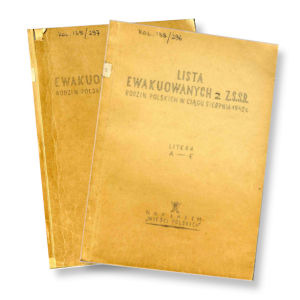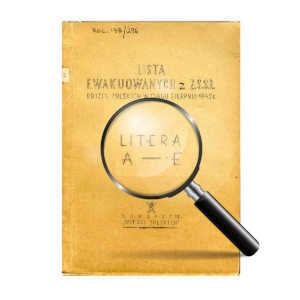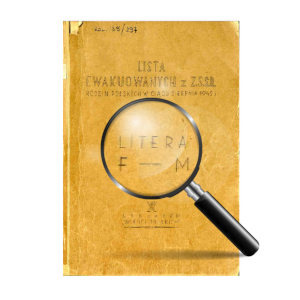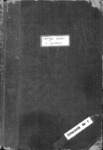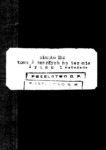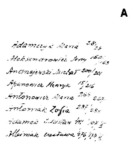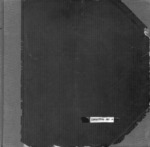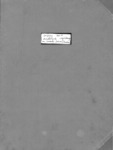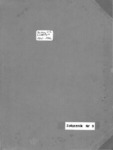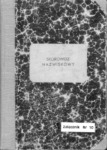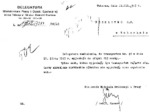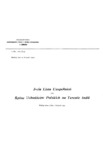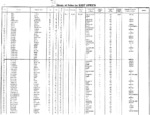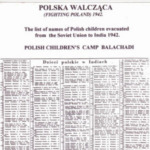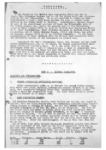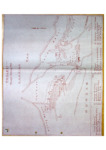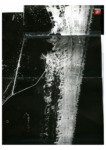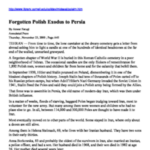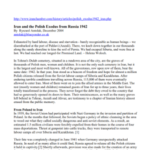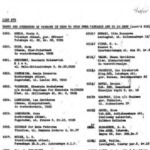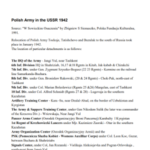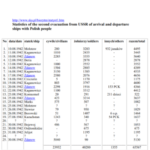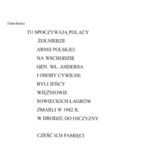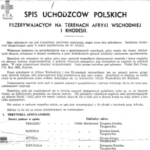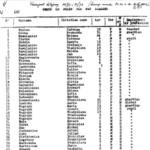Lists
With thanks to the following for the hours they spent on these searchable documents:
Iran Archive 1942 – 1945
Council for the Protection of Struggle and Martyrdom
In 1942, tens of thousands of Polish military and civilian refugees found themselves in the land of Iran. As a result of the evacuation of the Polish Army under the command of General Wladyslaw Anders from the Soviet Union, more than 120 thousand Poles reached Iran by sea and land. This included more than 77,000 soldiers and over 43,000 civilians including almost 20,000 children who miraculously survived something close to hell.
For the vast majority of them Iran was only meant to be the next stage in their migration to be free from the turmoil of war in their journey to more peaceful countries. For many of them, however – having experienced Soviet prisons and camps, misery, exile and diseases – their journey ended on Iranian soil, and their tombs there are dramatic testimony to the fate of Poles forcibly expelled from their own country. Their exile in Iran ended for over 2,900 Polish refugees, soldiers and civilian people.
Courtesy of the Embassy in Tehran, the Polish archives provide invaluable material documenting the fate of the Poles, whose wartime exile led them to the Iranian lands. In the set of documents, which we called the Iranian Archive 1942-1945, include among others. ‘Church Registers birth and Holy baptism (two volumes), INDEX dead in Iran and the USSR (three volumes), Index and the Book of the dead military in Iran and Iraq (three volumes), List of dead in Iran in the years 1942-1944; Indexes of the names of refugees and passport act drafted by the state of 26 August 1946, List refugees, including evacuated to East Africa, India, Mexico and New Zealand. ‘
These documents came to light years later, on the eve of the 60th anniversary of the evacuation of Poles from the Soviet Union to Iran and have become the basis prepared by the Council OPWiM book “Poles in Iran from 1942 to 1945.” Making the full Archive 1942-1945 available to the community, interested persons will undoubtedly value the information provided in the commemoration of the fate of Poles in the last World War.
Andrew Przewożnik, Secretary, Council for the Protection of Struggle and Martyrdom
Warsaw, April 2003
These files are all PDF documents which you can download and view. Some of them are very large files and may take time to download.
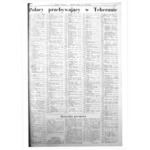 “Polska Walcząca” – list of persons arriving in Tehran, Persia (Iran) from the USSR with Anders Army in 1942, originally published in the Polish exile newspaper “Polska Walcząca” (“Poland Fighting”) in London, England. Listed are given names and details of Polish citizens evacuated from Russia to Persia. Details are provided of each person’s surname, name, birthdate, birthplace, and additional information on trade or relationship. This list contains 10,321 names, organised in alphabetical order by last name, though within each letter series the names are sometimes out of order, so an entire alphabetical section should be read to find a specific name. The original documents are located in the “Polska Walcząca” collection in the Polish Library, POSK Polish Cultural Centre in London, at: 238-246 King Street, London England W6 ORF. Tel +44 (0)20-8741-7724. E-mail: bibliotekapolska@posklibrary.fsnet.co.uk.
“Polska Walcząca” – list of persons arriving in Tehran, Persia (Iran) from the USSR with Anders Army in 1942, originally published in the Polish exile newspaper “Polska Walcząca” (“Poland Fighting”) in London, England. Listed are given names and details of Polish citizens evacuated from Russia to Persia. Details are provided of each person’s surname, name, birthdate, birthplace, and additional information on trade or relationship. This list contains 10,321 names, organised in alphabetical order by last name, though within each letter series the names are sometimes out of order, so an entire alphabetical section should be read to find a specific name. The original documents are located in the “Polska Walcząca” collection in the Polish Library, POSK Polish Cultural Centre in London, at: 238-246 King Street, London England W6 ORF. Tel +44 (0)20-8741-7724. E-mail: bibliotekapolska@posklibrary.fsnet.co.uk.
These lists have been made available to the Kresy-Siberia Group by Mr Tadeusz Dobrostanski of Melbourne,
Australia and Mrs Wieslawa Kleszko, Secretary of the “Koło Indian” (Society of Polish Exiles in India) of
London, England.
These lists have been digitized by Janusz Zajączkowski, London UK.
 WARNING: This is a very large file and will take some time to open! Originally published as a series of 4-page inserts No.1 to 17 in the Polish exile newspaper “Polska Walcząca” in London, England, between 10 April 1943 (Issue 14) and 7 August 1943 (Issue 31).The first 16 lists contain the names of approximately 1,900 persons each, for a total of about 30,000 people. They are organised in alphabetical order by last name, though within each letter series the names are sometimes out of order, so an entire alphabetical section should be read to find a specific name.
WARNING: This is a very large file and will take some time to open! Originally published as a series of 4-page inserts No.1 to 17 in the Polish exile newspaper “Polska Walcząca” in London, England, between 10 April 1943 (Issue 14) and 7 August 1943 (Issue 31).The first 16 lists contain the names of approximately 1,900 persons each, for a total of about 30,000 people. They are organised in alphabetical order by last name, though within each letter series the names are sometimes out of order, so an entire alphabetical section should be read to find a specific name.
Pahlevi reports from the UK National Archives: There are two from Lt. Col. Ross (one for March – April and the other for August – September 1942). There is also a 3rd report from Lt. Col Ata-Ullah from the Indian Field Ambulance service. All fascinating with extremely valuable information on the arrivals in Pahlevi. Hopefully provides many of the missing pieces in your research. Ross mentions a German plane flying overhead in September. Maybe the one which took the aerial photos of the camps!
This list was found on the web site of te Archives of The American Jewish Joint Distribution Committee, Inc. at http://search.archives.jdc.org
Partial list of graves of 2nd Corps Soldiers buried in the USSR.
“Polska Walcząca” – list of persons arriving in Tehran, Persia (Iran) from the USSR with Anders Army in 1942, originally published in the Polish exile newspaper “Polska Walcząca” (“Poland Fighting”) in London, England. Listed are given names and details of Polish citizens evacuated from Russia to Persia. Details are provided of each person’s surname, name, birthdate, birthplace, and additional information on trade or relationship. This list contains 10,321 names, organised in alphabetical order by last name, though within each letter series the names are sometimes out of order, so an entire alphabetical section should be read to find a specific name. The original documents are located in the “Polska Walcząca” collection in the Polish Library, POSK Polish Cultural Centre in London, at: 238-246 King Street, London England W6 ORF. Tel +44 (0)20-8741-7724. E-mail: bibliotekapolska@posklibrary.fsnet.co.uk.
These lists have been made available to the Kresy-Siberia Group by Mr Tadeusz Dobrostanski of Melbourne,
Australia and Mrs Wieslawa Kleszko, Secretary of the “Koło Indian” (Society of Polish Exiles in India) of
London, England.
These lists have been digitized by Janusz Zajączkowski, London UK.
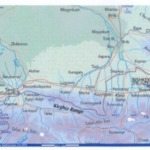 These pages comprise a list of persons repatriated to Poland by train from Dzhambul(nowadays Taraz), Kazakhstan, on 23 April 1946. Reference is made on a couple of pages to persons having lost their documents and dated May 1946. The train crossed the Polish border at Chelm on 15 May 1946 and then passed through Lublin. The list has been kindly donated by my cousin Jadwiga Horanin(zd Fedzin). It belonged to her father Michal Fedzin who kept the list after making the journey with his wife Katarzyna, my Grandfather Leon and other members of the Fedzin family. After ‘Amnesty’ the family travelled south from Barnaul, in the Altai region of Siberia. They most likely passed through Shu on the way to Lugovoy(see map) as this was an army recruitment centre. My father Jan and two brothers joined the Polish armies. The remainder of the family stayed in Engelsa Kolkhoz near Novonikolayevka(see map)from 1942 until leaving on the train in 1946. Katarzyna came from the town of Shu(see map).She had to give false information in order to be able to leave Kazakhstan. Her parents and siblings were on the platform in Dzhambul when the train left. This was the last time she ever saw them.
These pages comprise a list of persons repatriated to Poland by train from Dzhambul(nowadays Taraz), Kazakhstan, on 23 April 1946. Reference is made on a couple of pages to persons having lost their documents and dated May 1946. The train crossed the Polish border at Chelm on 15 May 1946 and then passed through Lublin. The list has been kindly donated by my cousin Jadwiga Horanin(zd Fedzin). It belonged to her father Michal Fedzin who kept the list after making the journey with his wife Katarzyna, my Grandfather Leon and other members of the Fedzin family. After ‘Amnesty’ the family travelled south from Barnaul, in the Altai region of Siberia. They most likely passed through Shu on the way to Lugovoy(see map) as this was an army recruitment centre. My father Jan and two brothers joined the Polish armies. The remainder of the family stayed in Engelsa Kolkhoz near Novonikolayevka(see map)from 1942 until leaving on the train in 1946. Katarzyna came from the town of Shu(see map).She had to give false information in order to be able to leave Kazakhstan. Her parents and siblings were on the platform in Dzhambul when the train left. This was the last time she ever saw them.
The fourth last page is a typed list of names missing(and number) from list due to photocopying.
Wagon Commander List
The last three pages appear to be a list of wagon numbers, the person in charge of that wagon and the number of persons in the wagon. Jadwiga told me that her father Michal(age 38) was “boss” of their wagon. However, it is my Grandfather’s name that appears on the list. Being 74 years of age he perhaps delegated the responsibility to his son.


